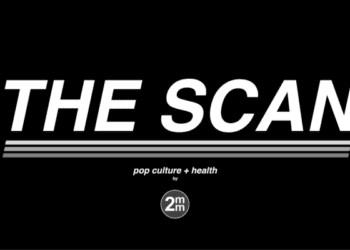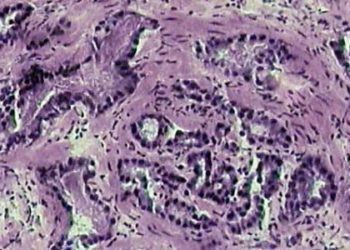The Scan by 2 Minute Medicine®: Slashing Seasonal Affective Disorder, Movember Movement, Syphilis Struggles, and Substance Use Disorders
11-14-2023
The Scan by 2 Minute Medicine® is a pop-culture medical newsletter and exclusive benefit for 2 Minute Medicine Plus subscribers.
Slashing Seasonal Affective Disorder
The Story: As days get shorter and nights get longer, sunshine is becoming a rare commodity, leading to increases in rates of seasonal affective disorder (SAD). This is a disorder that does not have a clear cause but is thought to be related to a lack of sunlight and shorter days causing chemical changes in the brain.
So, what is SAD?
SAD is a type of depression, often related to seasonal changes, and symptoms include losing interest in activities, sleep issues, and consistently low energy levels. These symptoms can make even day-to-day activities difficult, so treatments are very important. One commonly used treatment is cognitive behavioral therapy (CBT), a form of psychotherapy that aims to help a person select activities and behaviors that allow them to best cope with the short days and unpleasant feelings.
What kind of treatment options are available?
Another therapy often used is light therapy. This therapy uses light boxes to mimic natural, outdoor light and help resolve the chemical changes that take place in the brain during bouts of SAD. Selecting a light box is a heavy task since there are many things to consider. Light intensity is an important parameter, with recommendations of 10,000 lux exposure for 30 minutes, or 2500 lux exposure for 1-2 hours. As well, light boxes should have harmful UV rays filtered out, since these rays can have significantly negative impacts on the eyes. Proper use of these boxes is generally through morning viewing of the light box but not through staring directly at the light. When used correctly, light therapy can show clear benefits for the treatment of SAD. Additionally, the use of medications to treat SAD has been explored, namely selective serotonin reuptake inhibitors (SSRIs). Spending more time outdoors, although potentially cold, is also associated with positive outcomes in SAD.
Is it common to be affected by SAD?
SAD occurs in 0.5-3% of the population and can affect anyone. Despite being one of the most decorated athletes in history, Michael Phelps has personal experience with depressive symptoms as the seasons change. His symptoms began around October or November each year and eventually led to him seeking help to manage these symptoms. Such experiences prompted Phelps to begin the Michael Phelps Foundation, with the goal of removing stigma and raising awareness for discussions of mental health. During the filming of the Disney show “Hannah Montana”, Miley Cyrus’s long filming hours led to her mother wanting to bring in light therapy to help combat potential SAD due to the 12-hour work days on set.
Movember Movement:
As we are already 2 weeks into the month of November, it’s no surprise that people may be sporting mustaches. Since 2003, Movember has been a charity centered around Men’s health, and their work involves encouraging people to sport mustaches to raise awareness for men’s health.
This charity has partnered with other foundations, such as the Prostate Cancer Foundation, to raise funds and awareness for prostate cancer, a cancer that will affect 1 in 8 American men, and 1 in 9 Canadian men. As well as prostate cancer, the Movember charity aims to draw awareness to In Canada, 3 out of 4 deaths by suicide are men, and suicide is the second leading cause of death in Canadian males between 15 and 44 years of age. Societal factors and different symptom presentations are thought to contribute to the underdiagnosis of men’s mental health conditions, and part of rocking a Movember mustache is helping to end the stigma around seeking help for mental health concerns.
This cause is particularly relevant to the stories of some famous men who have fought the battle against prostate cancer. Though not known for a mustache, Ben Stiller shared his experience with prostate cancer, after a routine screening appointment revealed a potential anomaly. After confirming that it was prostate cancer, Stiller underwent removal of his prostate gland and made a recovery. Thanks to the Movember foundation, every mustache during the month of November represents a step forward in men’s health awareness.
Syphilis Struggles:
In 2022, 3700 babies were born with congenital syphilis, a condition occurring when a mother transmits syphilis to her baby during labor. This has drawn attention from the Center for Disease Control (CDC,) since this represents a 10-fold increase in congenital syphilis cases since 2012.
Syphilis is a bacterial disease most often transmitted through sexual contact, but it can also be transmitted during labor. It first presents as a painless sore in the genital region but eventually progresses to further signs and symptoms if left untreated. The second stage of symptoms is typically marked by the development of rashes or sores over the skin, mouth, vagina, or anus. This stage may also be accompanied by a fever, chills, weakness, and other flu-like symptoms. If the infection goes untreated, it may cause severe damage, such as heart disease, brain damage, and blindness. In infants, symptoms may include rashes, fever, enlarged liver, and an inability to move an arm or leg. Treatment of syphilis is accomplished with penicillin G, a derivative of penicillin that is especially effective against syphilis.
According to the CDC report, there were missed opportunities for testing and treatment in over 80% of cases of congenital syphilis, with over 33% of cases resulting from a lack of testing in mothers. In some cases, mothers were tested but were not given the correct treatment. In the 18th century, when Blackbeard the pirate sailed the seven seas, syphilis may have sailed with him. One of the tools found on his ship was a syringe used to inject mercury, a treatment believed to rid the body of syphilis. With current treatments far less toxic than mercury, the next step is to curb the spread of this disease.
Substance Use Disorders:
Matthew Perry, the beloved actor known for his role as Chandler Bing in the hit sitcom Friends recently passed away at age 54. Off-screen, Perry was vocal about his struggles with a substance use disorder.
A substance use disorder is the term used to describe a pattern of behavior that results in significant distress, due to the use of substances or drugs. It is estimated that nearly 20 million American adults live with a substance use disorder, which significantly impacts their lives and the lives of others. Substance use disorders can be especially difficult to treat due to withdrawal symptoms, which occur after a person becomes dependent on a substance that is abruptly withdrawn, often seen in people attempting to quit smoking. When overcoming substance use disorders, the body’s own biology tends to work against itself. Activation of key areas of the brain, associated with reward pathways, results in behavioral changes that make quitting difficult. Dopamine, a neurotransmitter implicated in the reward and pleasure system of the brain, is often elevated with drug use, so when the drug is removed, a person craves that pleasure from the drug.
Like Matthew Perry, many celebrities have struggled to overcome their substance use problems. Robert Downey Jr. has been vocal about his battle with drug use prior to his career as an actor taking off. Among other things, Downey Jr. credits therapy and family support for helping him beat this disorder. This story is not entirely uncommon among celebrities, who often face immense pressure and exposure to drugs and alcohol. Bradley Cooper has spoken about his fight with cocaine use after a fellow actor had a serious discussion with him about substance use. And it isn’t just actors, many musicians throughout history grappled with substance use disorders, such as Michael Jackson and Elton John. Fortunately, many individualized treatment plans are available for everyone, including medications, therapy, and more.
©2023 2 Minute Medicine, Inc. All rights reserved. No works may be reproduced without expressed written consent from 2 Minute Medicine, Inc. Inquire about licensing here. No article should be construed as medical advice and is not intended as such by the authors or by 2 Minute Medicine, Inc







